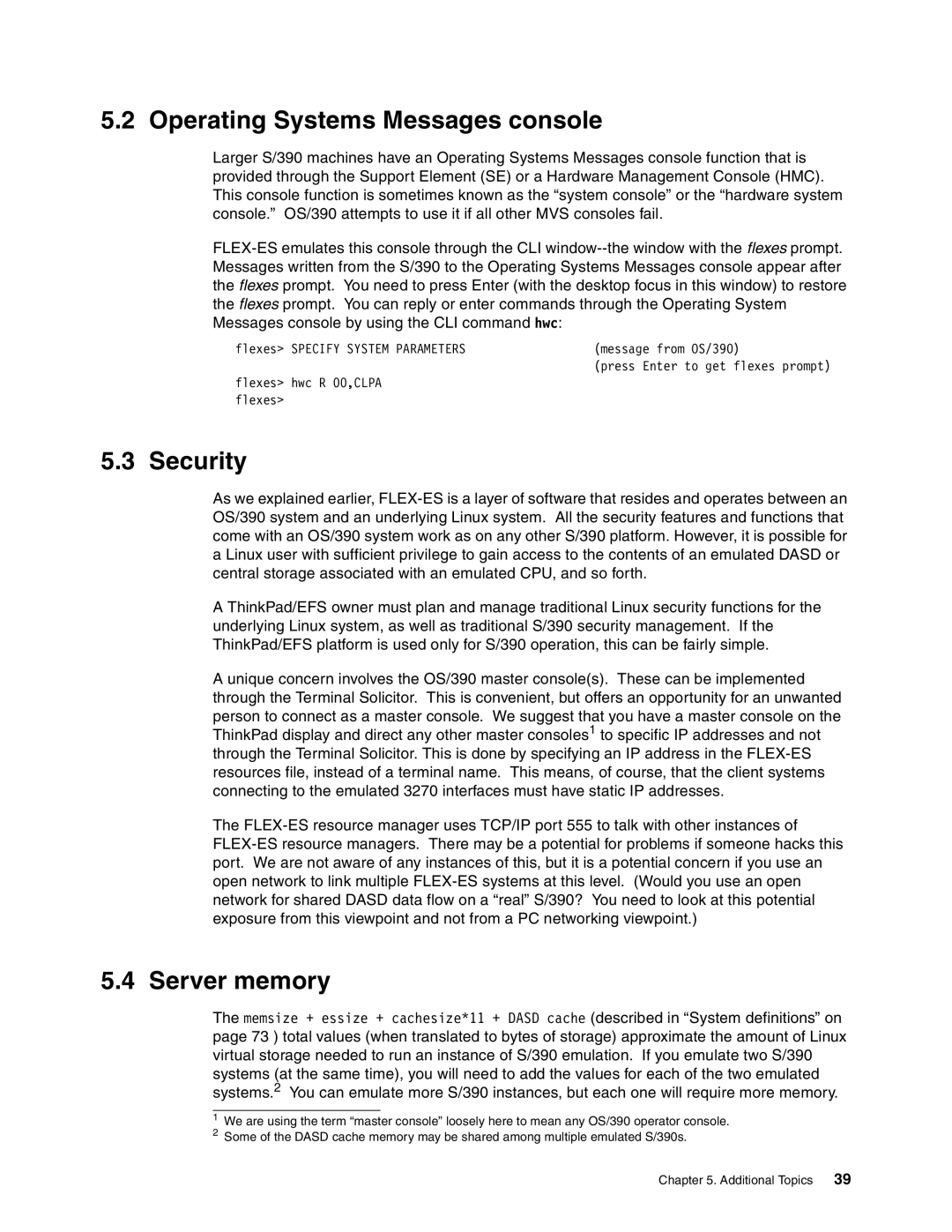5.2 Operating Systems Messages console
Larger S/390 machines have an Operating Systems Messages console function that is provided through the Support Element (SE) or a Hardware Management Console (HMC). This console function is sometimes known as the “system console” or the “hardware system console.” OS/390 attempts to use it if all other MVS consoles fail.
flexes> SPECIFY SYSTEM PARAMETERS | (message from OS/390) | |
flexes> | hwc R 00,CLPA | (press Enter to get flexes prompt) |
| ||
flexes> |
|
|
5.3 Security
As we explained earlier,
A ThinkPad/EFS owner must plan and manage traditional Linux security functions for the underlying Linux system, as well as traditional S/390 security management. If the ThinkPad/EFS platform is used only for S/390 operation, this can be fairly simple.
A unique concern involves the OS/390 master console(s). These can be implemented through the Terminal Solicitor. This is convenient, but offers an opportunity for an unwanted person to connect as a master console. We suggest that you have a master console on the ThinkPad display and direct any other master consoles1 to specific IP addresses and not through the Terminal Solicitor. This is done by specifying an IP address in the
The
5.4 Server memory
The memsize + essize + cachesize*11 + DASD cache (described in “System definitions” on page 73 ) total values (when translated to bytes of storage) approximate the amount of Linux virtual storage needed to run an instance of S/390 emulation. If you emulate two S/390 systems (at the same time), you will need to add the values for each of the two emulated systems.2 You can emulate more S/390 instances, but each one will require more memory.
1We are using the term “master console” loosely here to mean any OS/390 operator console.
2Some of the DASD cache memory may be shared among multiple emulated S/390s.
Chapter 5. Additional Topics | 39 |
